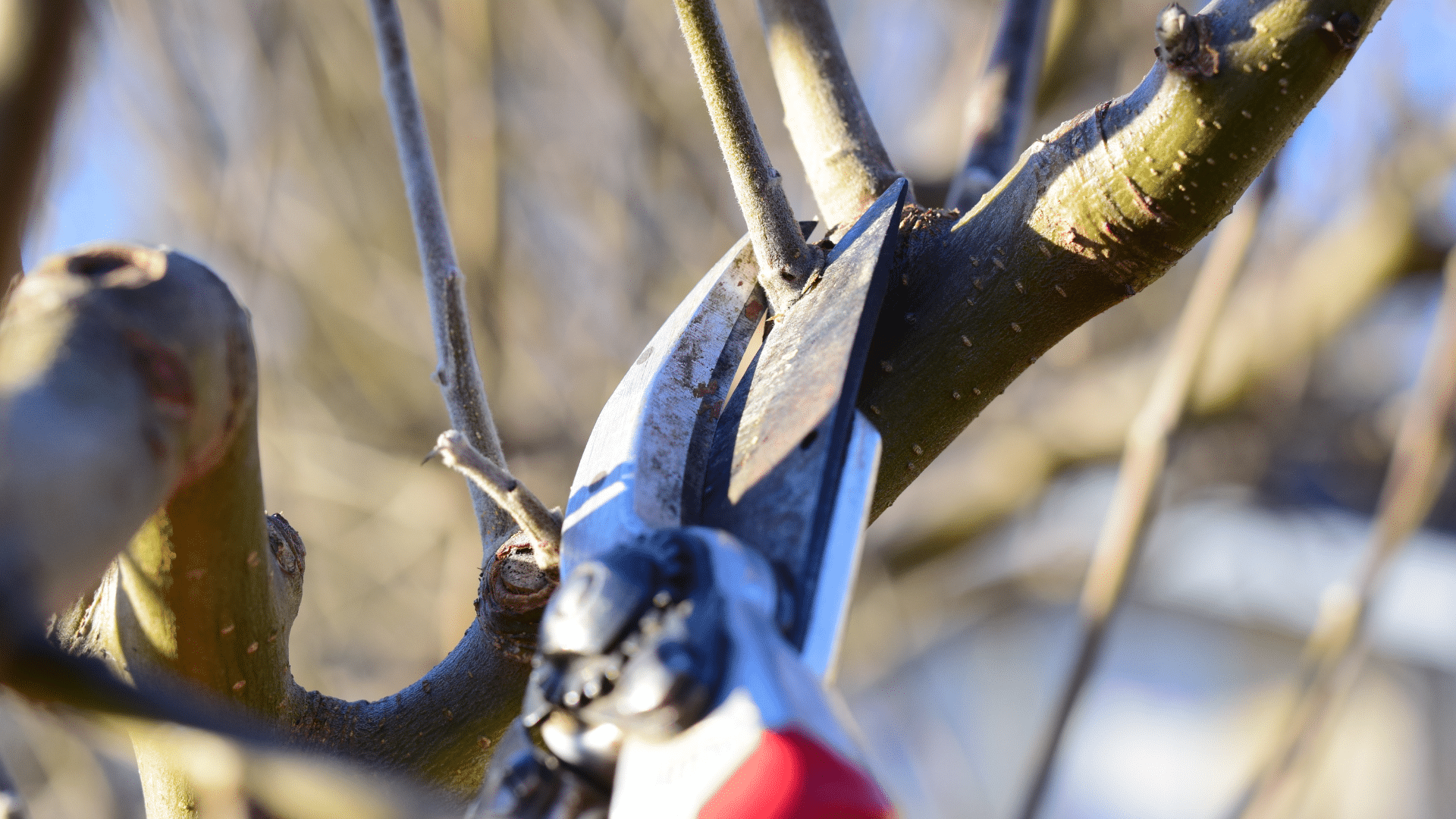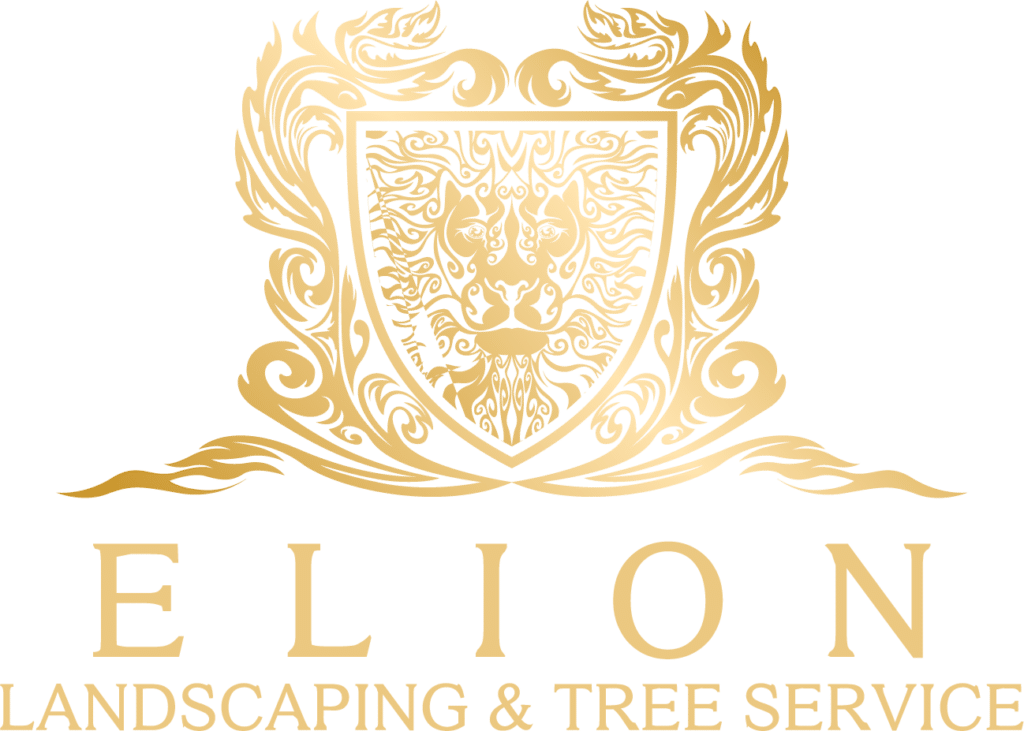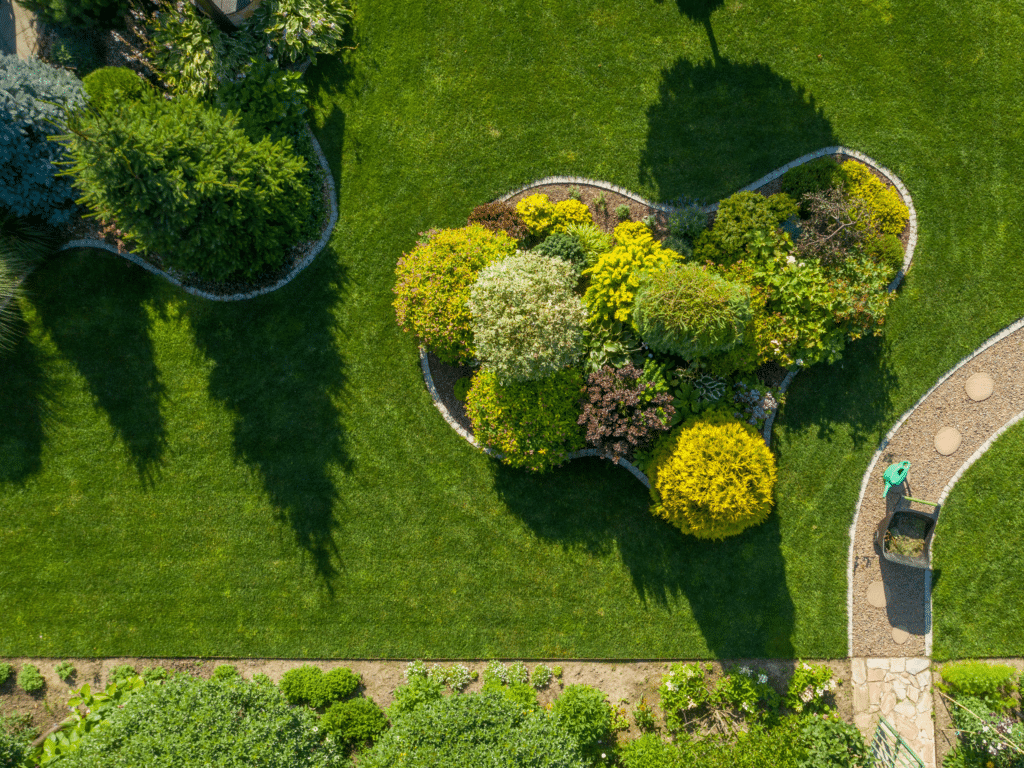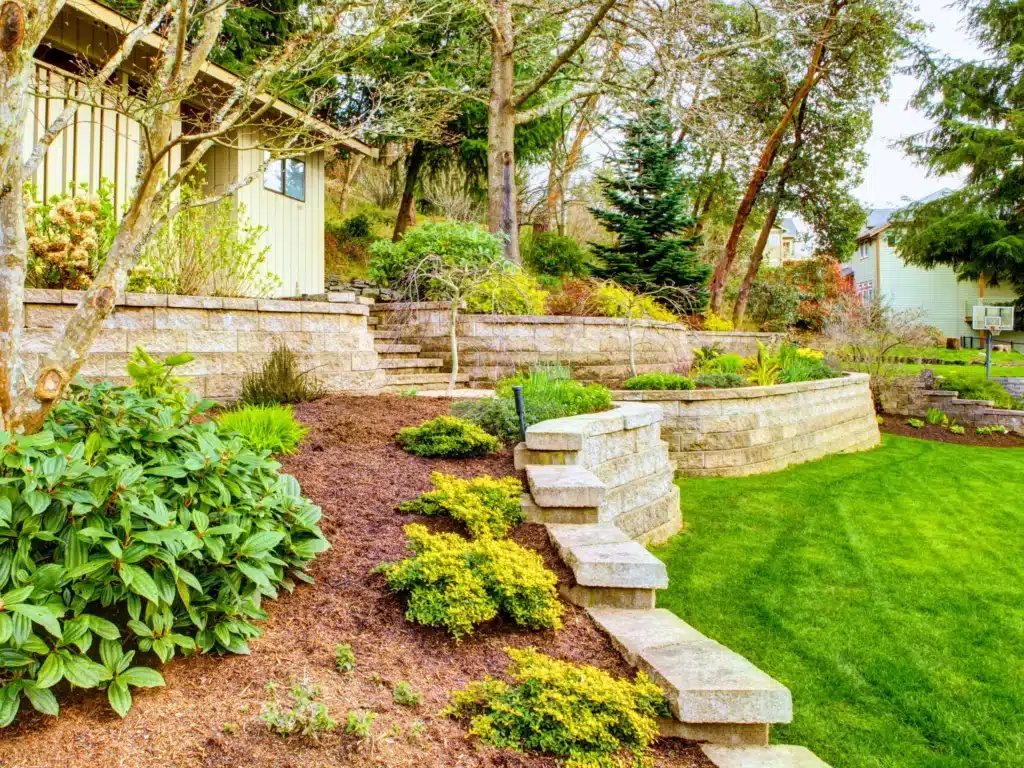Trees are not only beautiful, but they provide a variety of benefits to homeowners. They can help reduce your cooling bills in the summer by shading your home from the sun while also serving as windbreaks, which will help keep your house warmer in the winter. They can even help reduce road noise and provide privacy.
And most importantly, trees help to increase your property value. In fact, according to the Arbor Day Foundation, trees can increase property value by 3% to 15%. That’s a lot of money! But to enjoy all of these benefits, you’ll want to perform a variety of tree care tasks. These will not only help keep them looking their best, but it will also help prevent them from becoming hazardous.
We’ll try to help you do so below by sharing some of the most important tree-care tips Oklahoma residents should know.
Oklahoma Tree Care Tips: 11 Tree Care Solutions
There are a variety of things that homeowners should do to care for their trees, and it can take years to learn everything you’ll need to do. However, the following 11 tips represent a good starting point.
Tree Care Tip #1: Mulch the Root Zone
Applying a 2- to 4-inch-thick layer of organic mulch over your trees’ roots will provide a wealth of benefits. It will not only help protect them from things like mower damage and prevent the growth of grass and other competitors, but it’ll also moderate soil temperatures and help retain moisture.
Just be sure that you don’t pile mulch up against the trunk. Doing so can trap moisture, encourage fungal growth, and eventually lead to the need for complete tree removal.
Tree Care Tip #2: Provide Supplemental Water When Necessary
All trees should receive supplemental water after being planted. This will help them establish healthy roots and cope with the stress of the transplantation process. However, once established, most trees that are native to Oklahoma will thrive without the need for additional water during periods of normal weather.
With that said, droughts can cause stress for some species, causing them to require supplemental irrigation. A few of the species that are most likely to require additional water include:
- Sweetgum (Liquidambar styraciflua)
- Pecan (Carya illinoensis)
- American Sycamore (Platanus occidentalis)
- Red Maple (Acer rubrum)
- Bald Cypress (Taxodium distichum)
- Water Oak (Quercus nigra)
- Swamp White Oak (Quercus bicolor)
On the other hand, some species will only require supplemental water during the most extreme droughts. A few examples of these trees include:
- Eastern Red Cedar (Juniperus virginiana)
- Blackjack Oak (Quercus marilandica)
- Post Oak (Quercus stellata)
- Honeylocust (Gleditsia triacanthos)
- Mesquite (Prosopis glandulosa)
Because improper irrigation can cause the decline of a tree and lead to the need for complete tree removal, it is always wise to contact a professional tree service provider if you aren’t sure how much water your trees need.
Tree Care Tip #3: Provide Supplemental Irrigation Properly
Speaking of watering your trees, it is important that you do so in the right way and when it is necessary. That means keeping a few key principles in mind:
- Water the roots, not the leaves. Generally speaking, you’ll want to avoid spraying the leaves of your trees, as this can lead to fungal and bacterial growth.
- Water deeply and infrequently. You want to soak the root zone thoroughly about once per week. This helps to encourage deep root growth, which will allow the tree to obtain more water on its own.
- Water during the early morning or late afternoon. By applying water during the cool portion of the day, you’ll encourage the soil to absorb the water before it can evaporate.
If you are concerned about providing water in the appropriate way, contact a trusted tree care service provider. Tree-care professionals can help do things like set up irrigation bags or install drip irrigation systems to help automate the process and ensure good tree health.
Tree Care Tip #4: Protect the Critical Root Zone
Roots may be largely hidden from view, but they’re crucial to tree health and stability. This is especially true of those within an area called the “critical root zone,” or CRZ.
You can determine the radius of the CRZ by multiplying the tree’s diameter at breast height (DBH) in inches by 1.5 feet. In other words, if a tree has a trunk that’s 10 inches in diameter, the CRZ is a circle surrounding the tree with a radius of 15 feet.
Do everything you can to protect the roots in this area from damage and promote overall tree health. The mulch layer discussed earlier will help to some extent, but it is also important to avoid compacting the soil surrounding the roots. So, try to prevent vehicles from driving over the root zone, and limit the foot traffic to the extent you can.
If you’re having trouble determining exactly where the critical root zone stops, contact a professional tree service provider for assistance.

Tree Care Tip #5: Prune at the Appropriate Time
While you may need to prune trees for safety reasons at any point of the year, it is typically best to avoid pruning trees for aesthetic or non-time-sensitive reasons when they’re dormant. In Oklahoma, this typically means pruning between November and February.
Pruning deciduous trees at this time of year enables you to see the overall shape and branch structure more clearly, which will lead to better results. However, there’s another important reason to prune in the winter: Pathogens, which include potentially fatal diseases, such as oak wilt, are more likely to spread during the summer.
Additionally, pruning trees during their growing season simply causes them to suffer from more stress, which can ultimately lead to a sick tree. It also causes excessive sap flow, which is unsightly.
Tree Care Tip #6: Use Sound Pruning Techniques
Whether you need to prune a tree to remove a hazardous branch, provide additional clearance, or allow more airflow through the canopy in the case of overgrown trees, you must do so properly. This means following a few key tips:
- Use the proper tool for the job. Very small branches may be pruned with sharp pruning shears, while branches up to about 1 or 2 inches in diameter can be removed with a crosscut handsaw. But large branches should be handled with a properly sharpened chainsaw. However, as we’ll explain later, large branch removal and work involving a chainsaw is typically best left to a professional tree service.
- Locate your pruning cuts properly. In most cases, you want to place all pruning cuts right outside of the branch collar – the swollen, circular area of tissue at the base of each branch. By doing so, you allow the specialized cells in the branch collar to better seal the wound and protect the tree from decay. This can make all the difference between a quality tree that remains healthy for years and one that goes into decline.
- Use the three-cut method. If you cut branches improperly, the weight of the falling branch may rip off large pieces of bark, which will make the tree susceptible to serious health problems. So, start by making a cut on the bottom side of the branch a few inches outside the branch collar. Then, cut through the branch completely from the top side, while locating the cut several inches farther from the trunk than the first cut. Once the branch has been removed, you can trim the remaining stub by cutting through the branch from the top side, just outside the branch collar.
These pruning tips should help you take good care of your trees, but because a lot of skill and expertise is required, it is generally better to have professionals trim trees on your property when necessary.
Tree Care Tip #7: Don’t Place Heavy Borders Around Trees
While heavy paving stones, bricks, blocks, or other items may look very attractive around the base of some trees, these kinds of objects can cause problems for a tree’s long-term health. These types of objects can lead to soil compaction, and they may prevent healthy root development.
Additionally, many of these materials can heat up in the hot Oklahoma sun, which can, in turn, cause the soil temperature near the roots to rise. This can further stress the root system and lead to a tree’s decline.
If you’d like a border around your trees, contact a professional tree service and solicit their advice about materials and placement.
Tree Care Tip #8: Don’t Leave Trees Staked for Too Long
When planting new trees, it is often helpful to attach them to a rigid stake via a length of flexible fabric or cable. This helps prevent the tree from toppling over in the wind while waiting for its root system to develop and spread.
This is generally regarded as a sound practice, and many professional tree services routinely stake trees. However, you don’t want to leave a tree staked for too long, as trees develop best when allowed to slowly adapt to the prevailing wind patterns of an area.
Typically, this means you’ll want to leave a tree staked for approximately 1 year (though there are extreme cases in which you may need to leave them staked for twice as long). After this period has passed, remove the stake and allow the tree to stand on its own.
Tree Care Tip #9: Don’t Use Wound-Sealing Paint
The science of plant health care has changed dramatically over the last several decades, and many homeowners are unaware of which techniques are now considered outdated.
For example, tree-care professionals would historically cover pruning cuts with a special type of paint to help protect the tree from fungi and decay. However, modern research has shown that these paints do not help protect the tree. In fact, they may even trap fungi in the wood and cause problems.
Instead, you simply want to make proper pruning cuts to give the tree the best chance of compartmentalizing (sealing) the wound. But if you aren’t sure how to make the pruning cuts, simply contact a reputable tree service and have the job completed by a professional.

Tree Care Safety: Avoiding Dangerous Kinds of Tree Care!
While there are a variety of things homeowners can and should do to care for their trees, there are several tree care tasks that are simply too dangerous for the average person to handle. In fact, some kinds of tree care services are illegal for laypersons to perform in some Oklahoma jurisdictions.
To ensure you and your family stay safe, always leave the following tasks to the pros:
- Any tree trimming or tree pruning work that involves the removal of large branches. Many homeowners fail to appreciate the sheer weight of large tree branches or understand the unusual ways in which they can fall.
- Any tree pruning or trimming work that takes place above the ground. Each year, countless people are injured when trying to climb trees inappropriately or use a ladder in an improper manner.
- Any tree work that requires extensive use of a chainsaw unless you’ve been trained to use one. Chainsaws can exhibit something called “kickback” if the wrong part of the bar contacts the wood you’re trying to cut. This can send the bar flying back at your face with disastrous results.
- All tree removals involving trees that are more than about 10 feet tall. Tree removal is very dangerous work that puts your home and family at risk. Always defer to professional tree removal services, such as the experts at Elion Landscaping & Tree Service. Removing trees is dangerous work, and it can quickly lead to serious injuries (or worse).
- Stump grinding or stump removal. Tree stump grinding requires the use of heavy and dangerous machinery, and ad hoc removal techniques (such as pulling stumps from the ground with a vehicle) rarely turn out well. You can use chemical “stump grinding” treatments if you like, but these take many months to work.
- Advanced plant health care techniques, such as trunk injections. Sometimes, tree care involves things like pesticide applications or anti-fungal trunk injections. For the sake of your family’s safety and your trees’ health, these types of tasks are best left to professional tree services.
Professional Tree Care Help Is Available!
By following the tips discussed above, you should be able to keep your trees in good health and enjoy them for years to come. Just remember that some things – including any work above ground level and anything involving a chainsaw — are best left to the professionals.
Contact Elion Landscaping & Tree Service to get professional tree trimming and tree care services in the Oklahoma City suburbs. From tree planting to tree pruning to stump removal services and everything in between, we provide tree care services for residential and commercial properties. Additionally, we provide free estimates, always do an amazing job, and offer a customer satisfaction guarantee!



